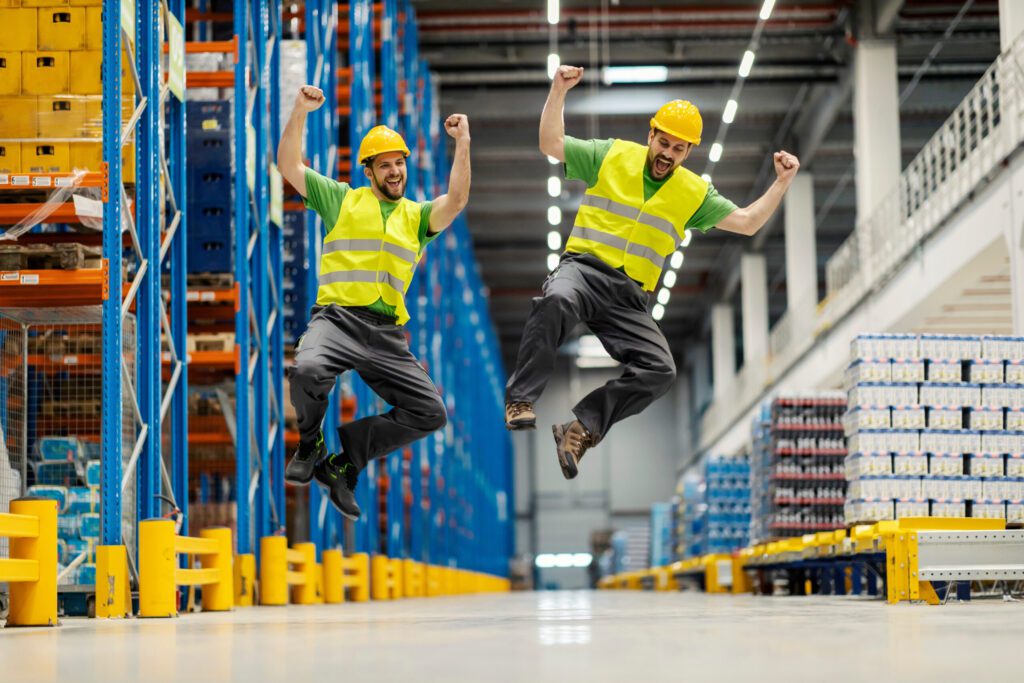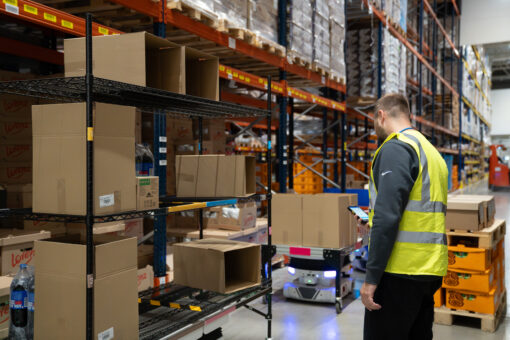WP: How to achieve 400 UPH with Locus Fast Pick
WP: How to achieve 400 UPH with Locus Fast Pick Download Now!
7 Top Reasons to Automate Your Warehouse in 2024
Mary Hart, Sr. Content Marketing Manager

Warehouse managers face immense pressure every day to fulfill ever-growing order volumes with shrinking labor budgets and supply chain disruptions. Of the 200 US-based manufacturing executives Deloitte surveyed for a supply chain report, 80% reported “heavy or very heavy impact on their supply chain by at least one disruption over the last 12–18 months” and 90% of surveyed executives reported “the frequency of these disruptions has increased over the last decade.”
What’s a warehouse to do? Simply put, manual or even conventional warehouse operations are no longer going to cut it. The time is now to adopt modern warehouse automation to stay efficient, competitive, and responsive, and there are a number of reasons to do so. Here are the top 7 warehouse automation benefits that drive warehouse managers to make the move.
1. Conquer Seasonal Peak Volume Spikes
Peak season can strike fear into the hearts of warehouse managers as they scramble to staff up while dealing with labor shortages and competition. Now automation has changed the game, enabling warehouses to cost-effectively scale up and down. With the flexible capacity of solutions like autonomous mobile robots (AMRs), especially with a robots-as-a-service (RaaS) subscription model, seasonal spikes become easier than ever to manage.
When you can flex your automation to scale up, peak becomes just another day rather than a “This is fine” meme moment of the dog sitting at a table with fire all around him. Later, when volumes subside post-peak, you can seamlessly dial back your robots while keeping your core team stable. If your volume orders stay high post-peak, you can convert your peak bots into full-time.
2. Boost Agility While Reducing Operating Costs
The robots-as-a-service (RaaS) business model mentioned above delivers automation as an operating expense rather than major capital expenditure. This lowers costs while providing flexible capacity that mirrors seasonal or market changes.
Rather than going with huge fixed assets, flexible and movable AMRs let you have the right automation fleet across ever-changing use cases and needs. This balance sheet-friendly path saves money while keeping operations nimble.
3. Accelerate Onboarding for New Hires
Warehouses tend to have frequent turnover, which traditionally impedes productivity when new hires onboard. With automation in the form of AMRs, our customers have seen training time slashed from weeks and days to just 15 minutes. Easy-to-understand user interfaces and display screens in the associate’s preferred language helps associates get accustomed quickly to the new technology. This means new associates get up to speed faster, eliminating productivity lags while associates learn the ropes.
4. Win New Business with Cutting-Edge Facilities
For third-party logistics (3PLs), an automated warehouse is the ultimate showcase to entice prospective customers, who’ll be sold on your services when they tour your robotics-powered operations. Automation demonstrates your commitment to innovation, efficiency, and meeting customer expectations and those important SLAs.
5. Maximize Vertical Space
Lack of floor space shouldn’t limit your greenfield or brownfield warehouse operations. While you may not be able to build out, you can build up to use existing overhead real estate in the form of mezzanines or pick towers. This approach in scaling up avoids the real estate costs of a new building, and warehouse automation like AMRs can readily work on multiple floors for streamlined order processing.
6. Strengthen Customer Trust and Accountability
For industries like pharmaceuticals and electronics, chain of custody traceability is non-negotiable for warehouse operations. When you automate your previously manual material handling, you will minimize the risk of in-transit items getting misplaced or stolen, and increase the accuracy of potentially life-saving orders by up to 99%.
7. Enhance Workplace Safety
By reducing reliance on error-prone forklifts and other manual material handling, automation in the form of AMRs drastically improves workplace safety by taking over the physically exhausting task of walking and carrying materials through a warehouse. This prevents injuries or accidents that would otherwise degrade productivity or morale.
The Future is Automated
Research from ProGlove found that only a little more than one-third (36.1%) of the warehouse directors and managers surveyed are currently deploying warehouse automation technology. That leaves a lot of warehouses that are still using manual processes to fulfill orders through picking — not to mention performing putaway and point-to-point transport.
As the warehousing industry inevitably moves towards automation, our AI-powered robots are key to work alongside your human associates for warehouse productivity and safety. The Locus solution integrates seamlessly with human insight to drive the next level of data-driven warehouse efficiency.
Are you ready to transform your own operations leveraging the innovative solutions from Locus Robotics? Let’s talk about how flexible and scalable warehouse automation can resolve your labor woes, conquer peak seasons, strengthen safety, and help your warehouse improve productivity.




